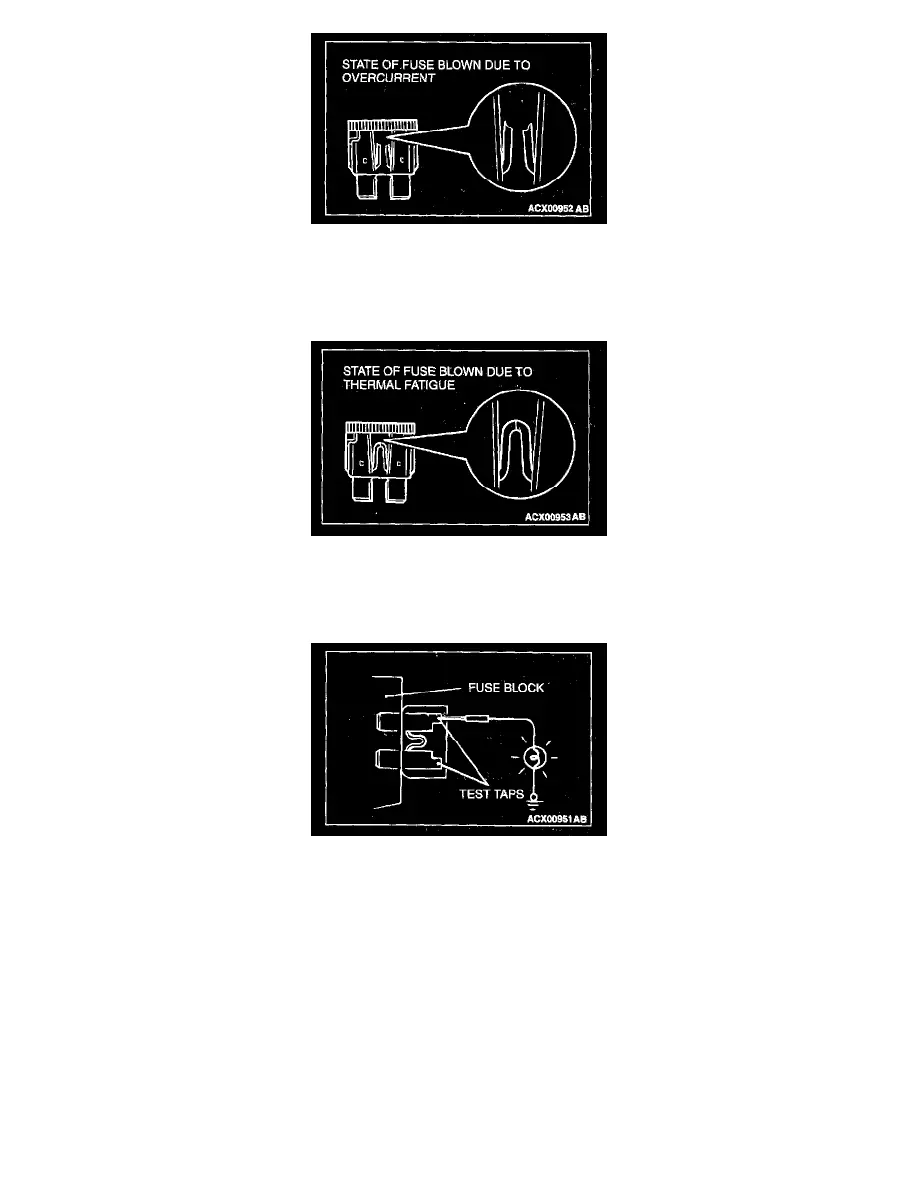Stratus Coupe L4-2.4L VIN G (2003)

1. Fuse blown due to current exceeding rating
The illustration shows the state of a fuse blown due to this cause. In this case, do not replace the fuse with a new one hastily since a current heavy
enough to blow the fuse has flowed through it. First, check the circuit for shorts and check for abnormal electric parts. After correcting shorts or
replacing parts, use only a fuse of the same capacity as a replacement. Never use a fuse of larger capacity than the original fuse. If a larger capacity
fuse is used, electric parts or wiring could be damaged, or could start a fire.
2. Fuse blown due to repeated turning current on and off The illustration shows the state of a fuse blown due to repeated current on/off. Normally,
this type of problem occurs after a fairly long period of use and is less frequent than above. In this case, simply replace with a new fuse of the same
capacity.
Checking Fuses
A blade type fuse has test taps provided to allow checking of the fuse itself without removing it from the fuse block. The fuse is okay if the test light
comes on when its one lead is connected to the test taps (one at a time) and the other lead is grounded. Remember to turn the ignition switch to ON to
ensure all circuits are live.
Checking Relays
NOTE: The deenergized state means that no current is flowing through the coil. The energized state means that current is flowing through the coil.
